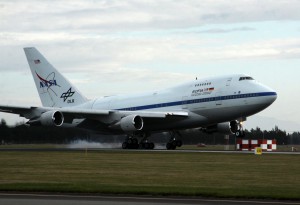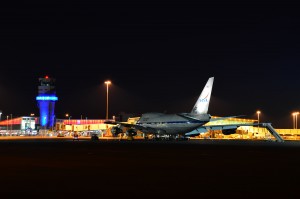These pages will bring news and information about our science observations during our mission’s six-week deployment to observe the southern skies.
SOFIA arrived in Christchurch, New Zealand, on June 14 (New Zealand date) to begin the observatory’s second Southern Hemisphere deployment. The team’s first visit to Christchurch was in 2013, and that deployment was an outstanding success. The quality of the science data obtained from our previous flights out of Christchurch was excellent, and we’re expecting similar results again this year.
As you read this, our staff is conducting mission operations from the National Science Foundation’s U.S. Antarctic Program (USAP) facility on Christchurch International Airport. Our mission is grateful to the National Science Foundation for making this facility available to us. The USAP facility is not in use during New Zealand’s winter, which is the reverse season to the Northern Hemisphere, so this is an ideal opportunity to make use of an otherwise idle base.

In 2013, SOFIA flew with one instrument, the German REceiver for Astronomy at Terahertz Frequencies, GREAT. This year our scientific productivity will be greatly increased, as we will make observations with four instruments (Faint Object InfraRed CAmera for the SOFIA Telescope – FORCAST, First Light Infrared Test Experiment CAMera – FLITECAM, GREAT, and High-speed Imaging Photometer for Occultations – HIPO).
With a four-fold increase in science instrument capability, we will perform science observations on parts of the universe that are not accessible from the Northern Hemisphere. Additionally, we will incorporate a special observation which we call a “target of opportunity,” to observe a Pluto occultation as it passes in front of a star. The Pluto observation has the potential to provide cross-mission science data to the New Horizons mission, further demonstrating SOFIA’s scientific productivity. SOFIA’s observation of Pluto will occur on June 29th, just a couple of weeks before the New Horizons’ spacecraft fly-by of Pluto on July 14th.
I am really excited about the science plan for this year’s Southern Hemisphere campaign, and I have no doubt that there will be obstacles and challenges during deployment operations. The science we obtain will be worth all of the long hours and the days away from home.

I look forward to everyone’s safe return home and to another SOFIA team success!
— Eddie Zavala – Program Manager
